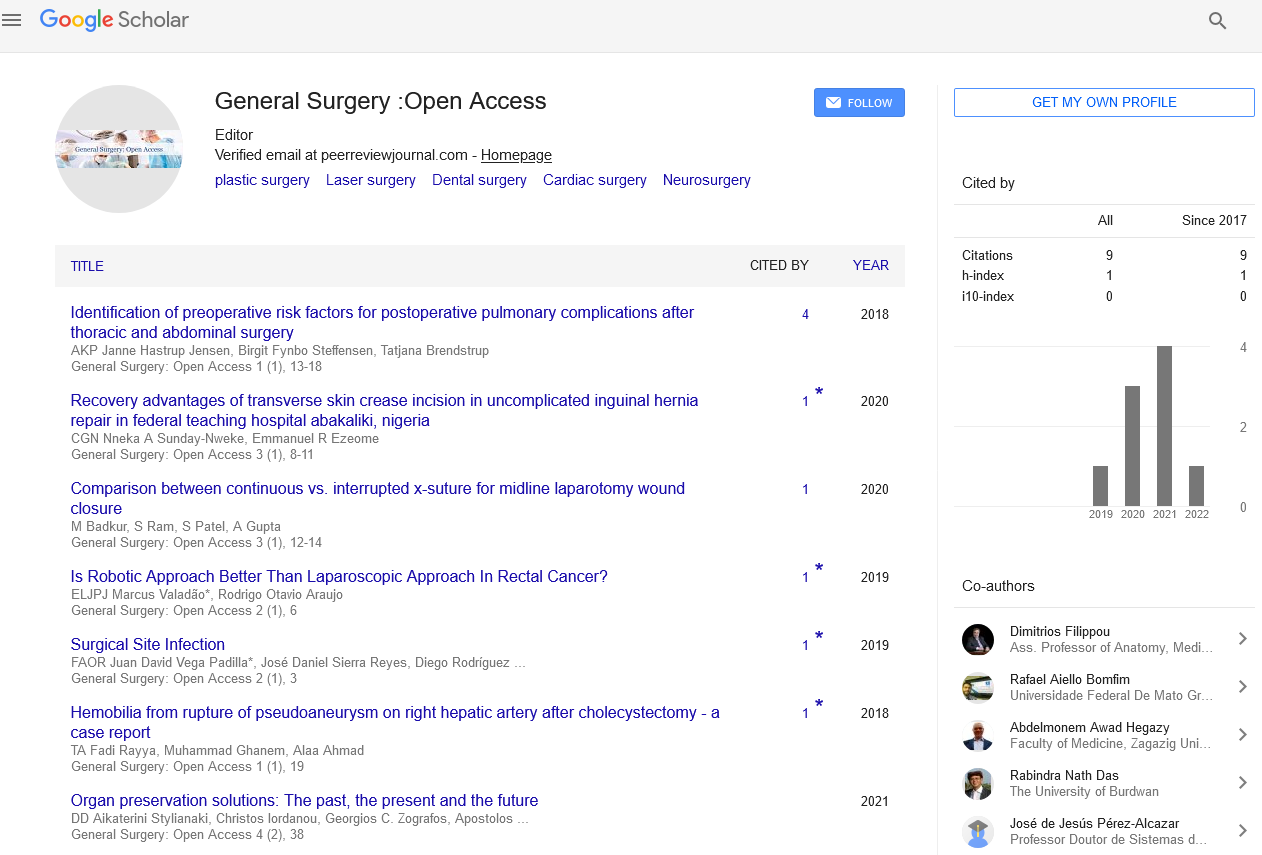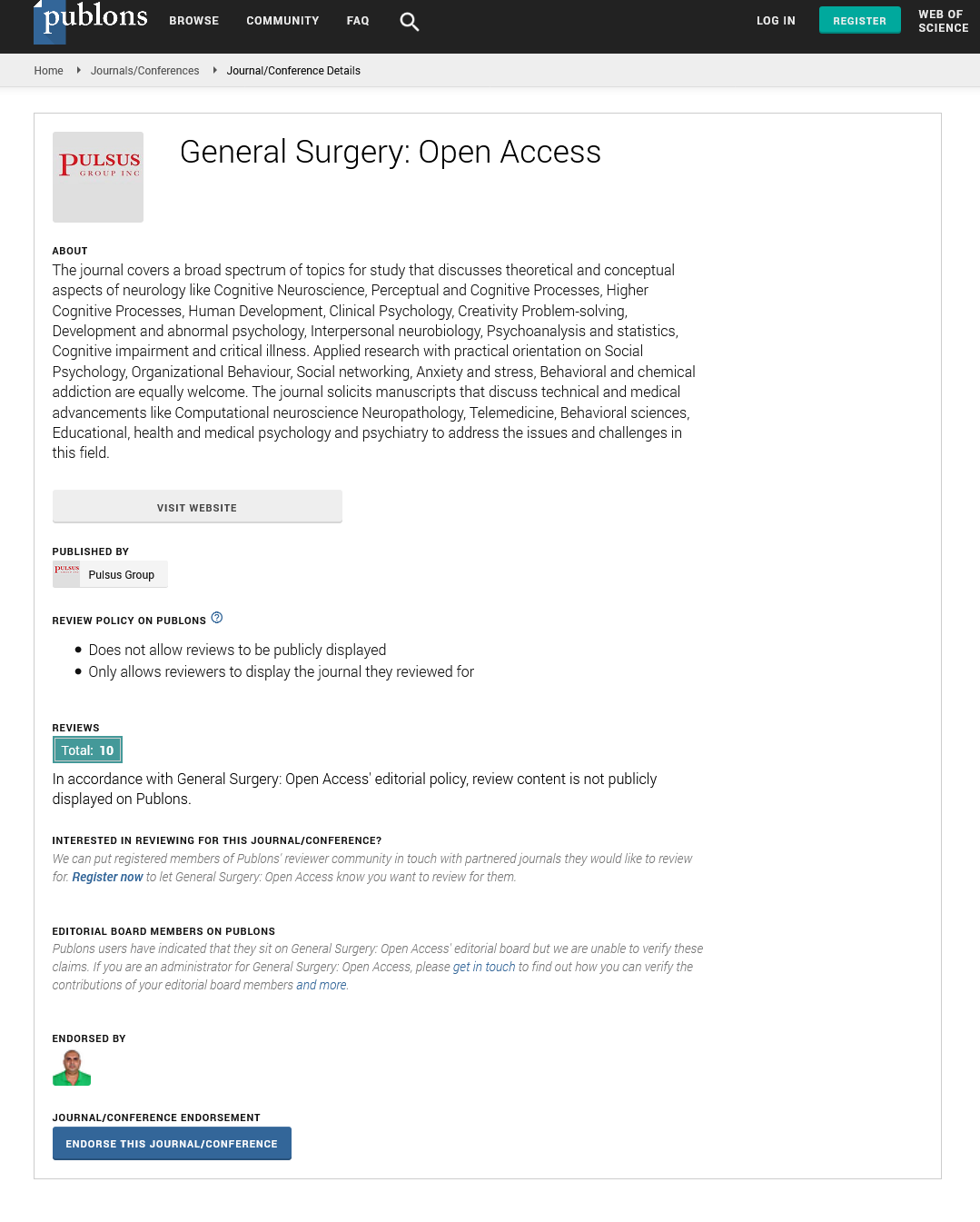Diagnostic imaging overuse and the choosing wisely initiative
2 Prince Mohammad Bin Nasser Hospital, Jazan, Ministry of Health, Kingdom of Saudi Arabia
3 Health Directorate, Ministry of Health, Jazan, Kingdom of Saudi Arabia
Received: 31-Mar-2022, Manuscript No. PULGSOA-22-4650; Editor assigned: 04-Apr-2022, Pre QC No. PULGSOA-22-4650(PQ); Accepted Date: Apr 15, 2022; Reviewed: 06-Apr-2022 QC No. PULGSOA-22-4650(Q); Revised: 11-Apr-2022, Manuscript No. PULGSOA-22-4650(R); Published: 20-Apr-2022
Citation: Awashi H.A, Daghriri M.H, Khan L.A. Diagnostic imaging overuse and the choosing wisely initiative. Gen Surg: Open Access. 2022;5(3)12-13
This open-access article is distributed under the terms of the Creative Commons Attribution Non-Commercial License (CC BY-NC) (http://creativecommons.org/licenses/by-nc/4.0/), which permits reuse, distribution and reproduction of the article, provided that the original work is properly cited and the reuse is restricted to noncommercial purposes. For commercial reuse, contact reprints@pulsus.com
Abstract
The choosing wisely initiative, a health educational campaign, was coined by the American Board of Internal Medicine (ABIM) Foundation in 2012 and adopted by many medical organizations worldwide, including the Ministry of Health (MoH), Kingdom of Saudi Arabia (KSA), as the Adaa initiative. The campaign aimed; to identify tests and procedures; that are unnecessary and inappropriate and do not contribute to the overall health of the patients and encourage doctor-patient discussions before proceeding with them. Diagnostic imaging; was one of the many tests and procedures that were overused. The overuse of this diagnostic imaging will only increase the patient’s cost of healthcare and the public spending in turn. In compliance with the choosing wisely initiative of Adaa health of the MoH, we conducted a survey after eleven-week of rigorous health education in Prince Mohammed Bin Nasser Hospital (PMBNH) Jazan, a regional tertiary care facility. A substantial decrease in diagnostic imaging; was observed, indicating the need for continuous health education programs among the physicians and patients to choose wisely and plan the best suitable management option that should be productive on one end and cost-effective on the other.
Key Words:
Imaging, Overuse, Misuse, Choosing wisely, Adaa Health Initiative.
Introduction
Globally the healthcare cost is overwhelmingly increasing which makes it challenging for most countries specifically low-income and populated countries. This substantial increase in healthcare costs affect the public in general: and individuals in specific. Many factors contribute to this increase; however, the most common is the overuse of diagnostic tests, including imaging studies.
The American College of Radiology (ACR) was one of the nine medical specialty societies; that joined the American Board of Internal Medicine-led Choosing Wisely campaign and participated in compiling the initial list of unnecessary tests where the ACR’s Five; were chosen to reduce inappropriate care, lower patient dose, and help curb healthcare costs [1,2]. Diagnostic imaging studies were one of the modalities noted in the list of the overused tests, as the initial data was collected by the American Board of Internal Medicine Foundation along with other medical organizations as part of the “ Choosing Wisely Initiative” [1]. Out of the forty-five tests and treatments, twenty-four were related to diagnostic imaging directly [3]. These non-required imaging costs both the person and the public. An estimated 5% of the gross domestic product; was spent on tests and procedures where the patient outcome is not guaranteed, as noted by Laine [4].
Many factors contribute to unnecessary diagnostic imaging requests. One in common is the switching of the patient between physicians, and thus the new treating doctor asks for repeated tests. This phenomenon may be managed; by an individual national medical number, which can be accessed at each level of care as implemented in the new Model of Care (MoC) of the kingdom. However, it is not without cons and is impossible to implement in countries where the healthcare system is complicated [5].
Another strategy that can minimize the overuse of unnecessary diagnostic imaging is health education. Health education has a positive role in decision-making among patients and physicians. The study of Rao and Levin emphasizes the need for physicians’ knowledge and criteria for appropriate imaging, which will, in turn, reduce the unnecessary testing benefiting both the individual and public healthcare system [6]. Similarly, Sá Dos Reis, et al. emphasize the need for criteria development in a clinical setting, including high-quality education and training sessions in the clinical departments as a strategy to select the best possible imaging for a pathological condition [7].
Similarly, in the choosing wisely initiative of the Adaa program of the MoH, which that launched recently: we perform an eleven-week comprehensive health education sessions in Prince Mohammed Bin Nasser Hospital (PMBNH) ,a tertiary care facility in the Southwest region of the Kingdom and found a substantial reduction in the diagnostic imaging (yet to be published). Our findings suggest that patient-doctor education improves the management decision while minimizing the unnecessary tests that cannot improve management outcomes.
Conflict of Interest
The authors have no conflict of interest to declare.
Source of Funding
There was no source of funding for this work.
Authors Contribution
H.A.A acquired the idea, reviewed and approved the manuscript.
L.A.K acquired the idea, wrote and prepared the draft.
M.H.D reviewed and edited the draft.
authors approved the final manuscript.
REFERENCES
- Cassel CK, Guest JA. Choosing wisely: helping physicians and patients make smart decisions about their care. JAMA. 2012; 307:1801-1802.
Google Scholar Crossref - Beth W. Orenstein. Choosing Wisely. Radiology Today. 2012; 13: 16.
- Choosing Wisely, Clinician lists 2022.
- Laine C. High-value testing begins with a few simple questions. Ann Intern Med. 2012; 156:162-163.
Google Scholar Crossref - https://www.moh.gov.sa/en/Ministry/vro/Documents/Healthcare-Transformation-Strategy.pdf Accessed on 27/3/2022
- Rao VM, Levin DC. The overuse of diagnostic imaging and the Choosing Wisely initiative. Ann Intern Med. 2012; 157:574-576.
Google Scholar Crossref - Sá Dos Reis C, Bennett C, Sun Z. Education and training as a strategy to improve justification of medical imaging referrals in emergency departments. J Med Radiat Sci. 2018;65:173-174.
Google Scholar Crossref






